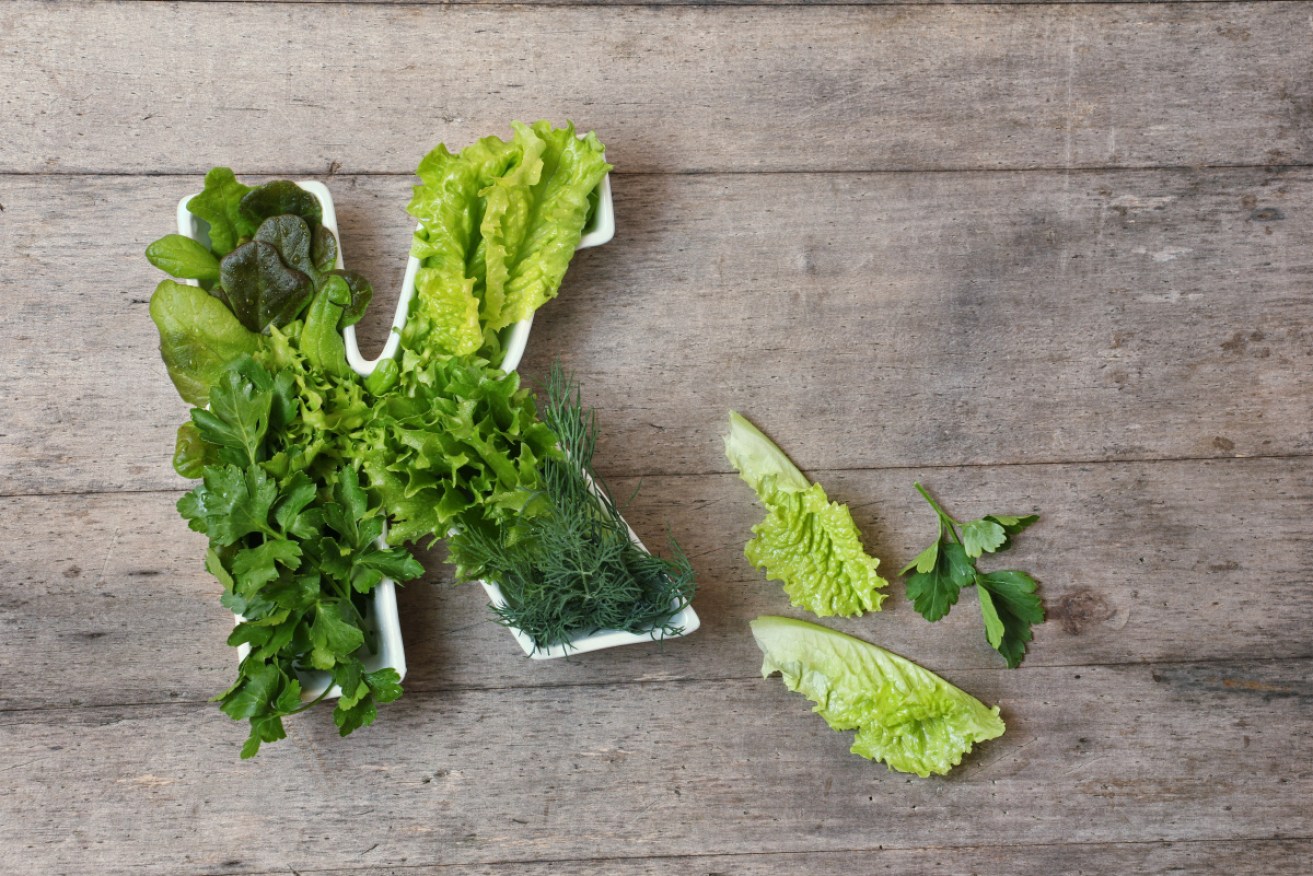Why you need vitamin K … as in ‘kale’ and other leafy greens


Bone-protecting vitamin K is found in leafy greens. Photo: Getty
Vitamin D tends to get all the publicity about improving and protecting your bones. But there’s increasing evidence that the lesser-known vitamin K plays a significant role in promoting bone density and lessening the risk of fractures.
Vitamin K is more often discussed in terms of blood clotting, which is necessary for wound healing and preventing blood loss. In fact, its name comes from the German koagulation.
Latterly, it’s been investigated for its role in heart health and diabetes.
An Edith Cowan University study, published in August, found that people who eat a diet rich in vitamin K have up to a 34 per cent lower risk of atherosclerosis-related cardiovascular disease (conditions affecting the heart or blood vessels).
A 2020 study suggests that supplementation of vitamin K may reduce the risk of Type 2 diabetes mellitus and improve insulin sensitivity.
Bone health a more pressing issue
Perhaps more pressing, though, is the relationship between vitamin K and bone metabolism (the cycle of bone-cell growth and resorption). It’s not simply a matter of vitamin K improving bone health – an inadequate intake actually hurts your bones.
This has been known for more than 20 years.
A 1999 study found that women who consumed less than 109 micrograms (mcg) of vitamin K per day were more likely to break a hip.
A 2003 study found an association between low dietary intake of vitamin K and low bone density in women – and again, with an attendant greater risk of hip fractures.
An adequate intake of vitamin K is considered to be 120 mcg for men and 90 mcg for women.

The foods you need to eat for K1 and K2. Image: Cleveland Clinic
How to source vitamin K
Vitamin K comes in two forms – K1 and K2.
Vitamin K1 is found primarily in green, leafy and cruciferous vegetables.
Cruciferous vegetables include broccoli, cauliflower, cabbage, kale, bok choy, arugula, Brussels sprouts, collards, watercress and radishes.
Half a cup of cooked kale delivers 565 mcg of vitamin K1.
Half a cup of cooked spinach gives you 444 mcg.
So it’s pretty easy to get more than your daily requirement.
But there are two issues to keep in mind:
You need to make this a daily habit, because vitamin K is highly soluble and is expelled fairly quickly from the body.
Also, if you’re on blood thinner medication, a diet rich in vitamin K, with its coagulant function, can work against your meds. So please discuss with your doctor.
Vitamin K2 is predominantly produced by bacteria, and is found in some dairy products, pork, poultry and fermented foods.
Vitamin K2 appears to have more of a protective benefit for bones than vitamin K1. But the body needs both, and a deficiency of either is detrimental.
And these benefits are probably more pronounced when vitamin K is consumed in tandem with vitamin D.
As for supplements, as it often goes with nutrition in a pill, the jury is still out.








